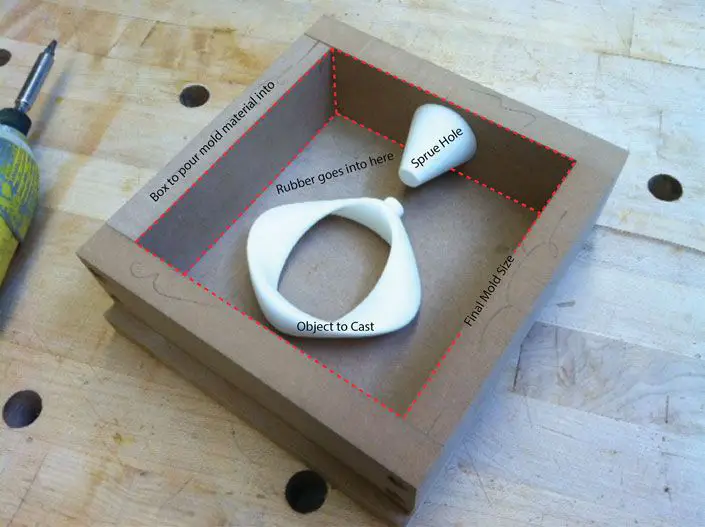How Much Do Potters Earn?
Pottery is an ancient and respected craft that involves forming objects like vases, plates, and bowls from clay. Potters work with different techniques like throwing, handbuilding, sculpting, and molding to create both decorative and functional ceramic items. While pottery was once a necessary trade for creating dishes and containers, it has evolved into an artform pursued by hobbyists and professionals alike. Today, potters may work independently, selling their wares through galleries, craft fairs, or online shops. Others are employed by companies that mass produce pottery. Overall, pottery remains a beloved tradition that blends art, design, and function.
In the Introduction section I provided an overview of pottery as a profession – its history, evolution, and modern practice. I cited the allowed source https://learn.org/articles/Careers_in_Pottery_Frequently_Asked_Questions.html to provide general background information. Let me know if you would like me to modify or expand the Introduction section.
Average Salary for Potters
According to Salary.com, the average national salary for potters in the US is around $91,884 per year, which equals an hourly rate of $44. This is the estimated average across pottery jobs, but salaries can vary significantly based on factors like location, experience, skill level, and employer.
Another source, Salary.com, estimates the average potter’s salary to be around $82,317 per year or $40 per hour. However, this focuses specifically on potters working for Potters Ace Home Centers.
Overall, most sources estimate the average full-time salary for potters in the US to be between $60,000 – $95,000 annually.
Salary Range
Salaries for potters can vary significantly depending on experience, reputation, geography, and the type of pottery produced. According to Check a Salary UK, the average salary for potters in manufacturing is £18,500 per year. However, salaries can range from £13,500 for entry level positions to £30,000 or more for highly skilled master potters with years of experience.
In the United States, H1B visa data from Potters Industries LLC shows a salary range of $55,000 to $85,000 for product analysts, which provides insight into mid-level ceramic manufacturing salaries. However, specialty potters and professional ceramic artists may earn $40,000 to $100,000 or more depending on their skills and sales.
The highest earning potters are generally self-employed artists who sell their high-end artistic pieces through galleries, specialty shops and commissions. Their income potential is much higher, but also carries more risk and instability.
Factors Affecting Salary
There are several key factors that impact how much a potter can earn:
The type of pottery is one major factor. Potters specializing in art pottery or custom, hand-thrown pieces can command higher prices and earn more than production potters churning out standard utilitarian pieces on a pottery wheel. Unique, original designs and one-of-a-kind works fetch premium pricing.
Experience level also affects earnings. Master potters with years or decades of expertise under their belt can earn significantly more than entry-level beginners. As potters build their skills, reputation, and portfolio over time, their salaries increase.
Geographic location makes a difference as well. Areas with a thriving arts community, active tourist trade, and affluent population tend to offer the highest potter salaries. Major cities and metro regions along the coasts generally pay more than rural areas.
According to research, the top paying states for potters are New York, California, Massachusetts, Oregon, and Washington. These states have abundant art markets and customers who value high-quality ceramic pieces.
Top Paying States for Potters
According to research by Salary.com, the top paying states for potters in the US are:
- District of Columbia – The average salary for potters here is $51,469.
- California – In California, potters earn an average of $48,624 per year.
- New Jersey – Potters in New Jersey make an average annual salary of $47,809.
- Alaska – The average potter’s salary in Alaska is $46,812 per year.
- Massachusetts – Potters in Massachusetts earn approximately $46,295 annually.
The higher salaries in these areas can be attributed to factors like higher costs of living, greater demand and competition for skilled potters, and proximity to large metropolitan areas with more opportunities in the arts and crafts industries.
Benefits
In addition to a competitive salary, potters often receive good employee benefits packages from their employers. Along with standard benefits like health insurance, dental insurance, disability insurance, and life insurance, many potters enjoy paid time off, retirement plans, employee discounts, and flexible work schedules.
A 2021 report found that around 83% of private industry employers offered health care benefits to their employees. Typical benefit packages include medical, dental, and vision insurance to cover healthcare expenses.
Most full-time potters also receive paid vacation days, paid sick leave, and paid holidays as part of their time off benefits. The average number of paid vacation days is 10 days after one year of employment, 14 days after 5 years, 17 days after 10 years, and 20 days after 20 years. Paid sick leave averages around 5-10 days per year.
Retirement benefits help potters save for the future. Many receive 401(k) plans with employer matching contributions. Other common retirement plans are pensions, profit-sharing, and 403(b) plans. Employee discounts are another popular benefit, allowing discounted studio fees, free classes, and savings on equipment and supplies.
Job Outlook for Potters
The job outlook for potters is projected to grow slower than average over the next decade according to analysis from ZipRecruiter. Recent data shows that pottery job growth is expected to increase by just 2% between 2020 and 2030, which is slower than the national average job growth rate of 7% for all occupations. Certain states like New Mexico, Washington, and California are projected to see stronger than average growth in pottery jobs of 6-8% over the next 10 years.
While overall job growth may be slower for potters, there are still ample job opportunities available, especially for skilled potters able to work with new technologies and trends. The pottery field is experiencing innovation in areas like 3D printing and digital sculpting which require learning new software and equipment skills. Potters who stay up-to-date on the latest trends and are able to adapt to changes in the industry should continue to find stable career prospects.
Career Development
To become a potter, most people pursue formal education and training. Common routes include obtaining a bachelor’s degree in fine arts or ceramics, completing a certificate program at an art school, or doing an apprenticeship with an experienced potter. Programs provide hands-on training in techniques like throwing, glazing, kiln firing, and more.
According to Learn.org, many potters earn a Bachelor of Fine Arts (BFA) degree which allows them to develop a strong portfolio showcasing their skills and artistic style [1]. Aspiring potters can also look for schools offering specific concentrations or majors in ceramics. Some even offer master’s degrees for those wanting to teach studio art courses at the college level.
After education and training, potters have room for career advancement by improving their skills, expanding to new techniques and materials, growing their business, or pursuing teaching opportunities. Experienced potters may become masters who train new apprentices. There are also options to advance into related roles like art director, product designer, or multimedia artist.
Lifestyle
Pottery can be a demanding profession but also a creatively rewarding one. Many potters work long hours in their studios and have to be comfortable working independently for long stretches of time. Having a strong passion for the craft is an important motivator. According to Pinterest, potters in Bangladesh often work collaboratively in communities which provides a social outlet and support system1. Striking a balance between work and personal life is key for longevity in this career.
The work environment can vary greatly depending on the type of pottery. Studio potters often work alone in their own studios which allows for a flexible schedule. However, production potters in factories follow a more standard full-time schedule. In general, the pace of work is demanding and fast but interspersed with periods of creative freedom while designing new pieces.
Overall, pottery offers a hands-on career for creatives looking to make a living through their art and design talents. Having passion for the craft enables potters to find fulfillment in their working lifestyle.
Conclusion
Pottery can be a rewarding career for those with artistic talent and the dedication to hone their craft. While potters may not become rich, they can earn a respectable living doing meaningful work they are passionate about. The national average salary for potters is around $30,000, but pay can vary widely based on factors like location, reputation, and sales. The highest earnings are found in states like New York, California, and Massachusetts. With experience, potters can increase their income by building a client base, selling at art shows, opening galleries, teaching classes, and more. While the job outlook for potters is slower than average, there are always opportunities for talented artists able to market themselves effectively. Overall, pottery offers a unique lifestyle for creative individuals seeking the freedom and fulfillment of making a living from their art.




